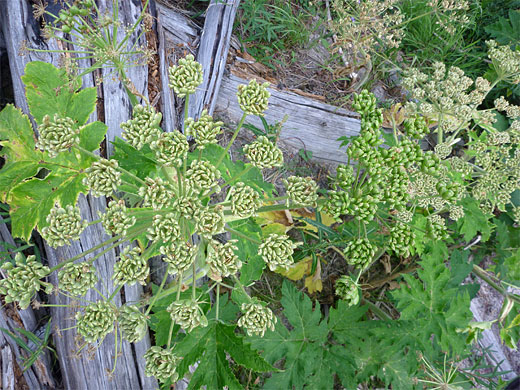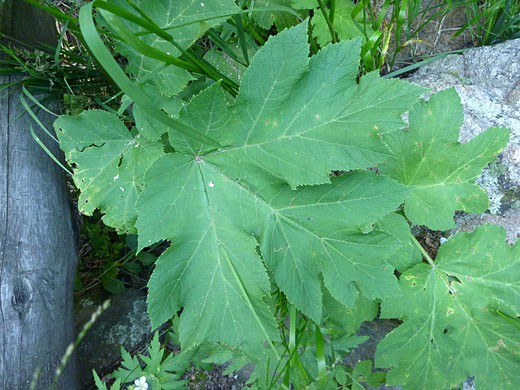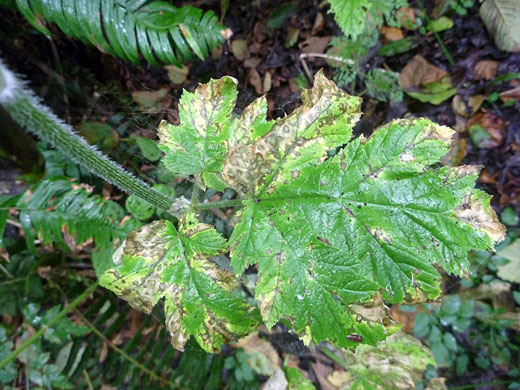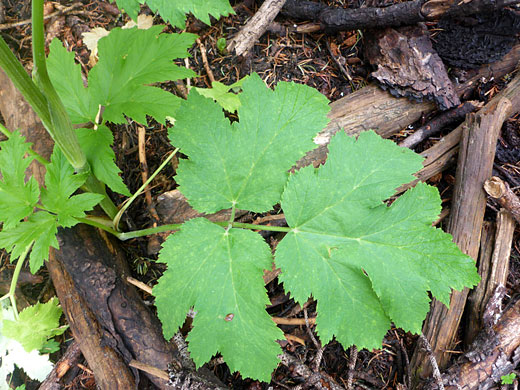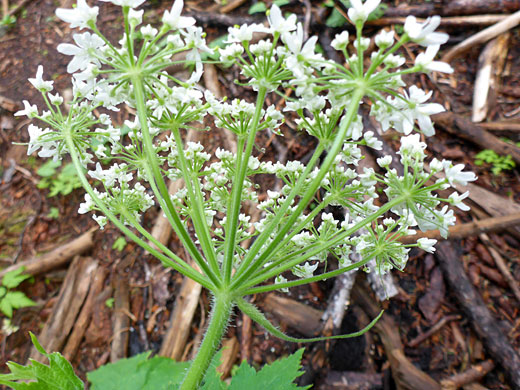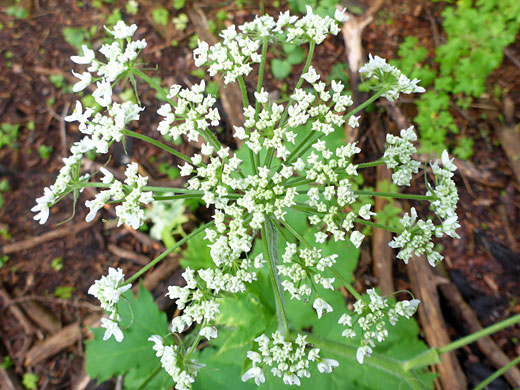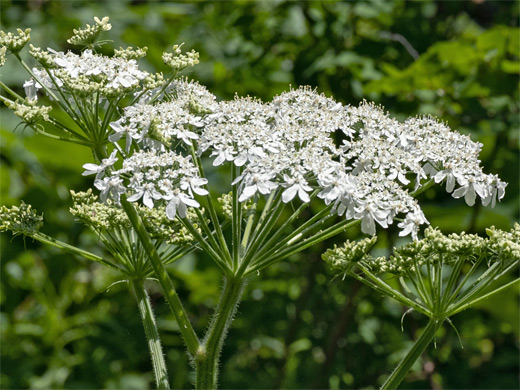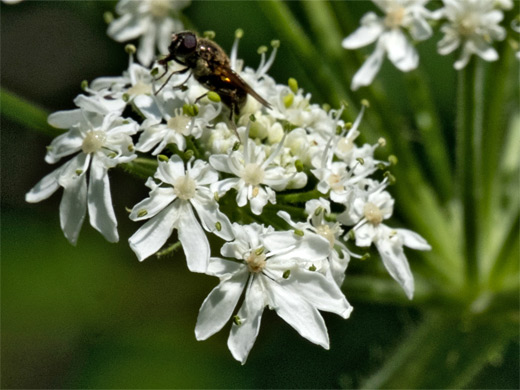Common names:
Cow parsnip, Indian celery
Family:
Scientific name:
Heracleum maximum
Synonym:
Heracleum lanatum
Main flower color:
Range:
The northern Great Plains, the Rocky Mountains and all states to the west
Height:
Up to 8 feet
Habitat:
Streamsides, moist meadows, valleys; up to 9,000 feet elevation
Leaves:
Alternate, large; up to 16 inches long and wide, divided into 3 lobed and toothed segments
Season:
February to September
The tiny, five-petaled flowers of heracleum maximum form a flat-topped cluster typical of the carrot family; the umbel divides into 15 to 30 segments (pedicels are up to 5 inches long), each with dozens of individual flowers. At the base of the umbel are several hairy, pointed, green bracts. Flowers are followed by greenish, oval-shaped seeds, which have four distinct lines down each side. Umbels form at the top of the stem and also from the upper leaf nodes.
The wide green leaves are also divided several times, into pointed, toothed lobes. The hairy, succulent stems are thick and rigid (though hollow), allowing the plant to reach heights of 8 feet or more. The lower end of the leaf forms a sheath around the stem. Cow parsnip has a very wide range, from sea level up to 9,000 foot mountains, and is classed as a weed in some areas. Plants produce just leaves during the first year of growth; flowers form in the second year.
The wide green leaves are also divided several times, into pointed, toothed lobes. The hairy, succulent stems are thick and rigid (though hollow), allowing the plant to reach heights of 8 feet or more. The lower end of the leaf forms a sheath around the stem. Cow parsnip has a very wide range, from sea level up to 9,000 foot mountains, and is classed as a weed in some areas. Plants produce just leaves during the first year of growth; flowers form in the second year.
All Contents © Copyright The American Southwest | Comments and Questions | Contribute | Site Map


